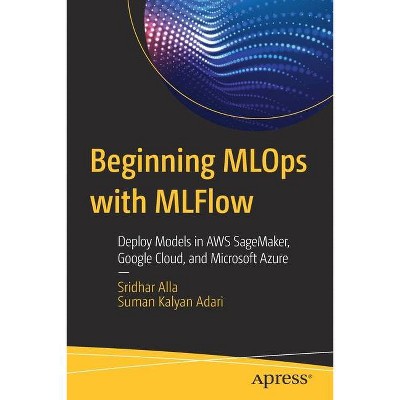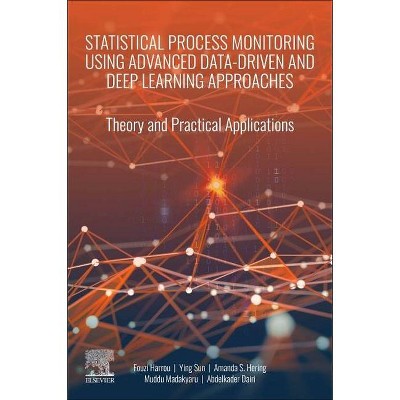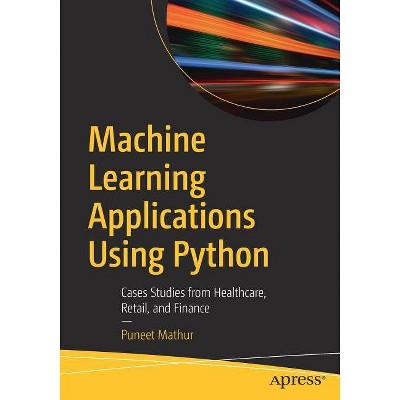Beginning Anomaly Detection Using Python-Based Deep Learning - by Sridhar Alla & Suman Kalyan Adari (Paperback)

Similar Products
Products of same category from the store
AllProduct info
<p/><br></br><p><b> Book Synopsis </b></p></br></br>Utilize this easy-to-follow beginner's guide to understand how deep learning can be applied to the task of anomaly detection. Using Keras and PyTorch in Python, the book focuses on how various deep learning models can be applied to semi-supervised and unsupervised anomaly detection tasks.<br>This book begins with an explanation of what anomaly detection is, what it is used for, and its importance. After covering statistical and traditional machine learning methods for anomaly detection using Scikit-Learn in Python, the book then provides an introduction to deep learning with details on how to build and train a deep learning model in both Keras and PyTorch before shifting the focus to applications of the following deep learning models to anomaly detection: various types of Autoencoders, Restricted Boltzmann Machines, RNNs & LSTMs, and Temporal Convolutional Networks. The book explores unsupervised and semi-supervised anomaly detection along with the basics of time series-based anomaly detection.<br>By the end of the book you will have a thorough understanding of the basic task of anomaly detection as well as an assortment of methods to approach anomaly detection, ranging from traditional methods to deep learning. Additionally, you are introduced to Scikit-Learn and are able to create deep learning models in Keras and PyTorch. <p/><b>What You Will Learn</b><ul><li>Understand what anomaly detection is and why it is important in today's world<br></li><li>Become familiar with statistical and traditional machine learning approaches to anomaly detection using Scikit-Learn<br></li><li>Know the basics of deep learning in Python using Keras and PyTorch<br></li><li>Be aware of basic data science concepts for measuring a model's performance: understand what AUC is, what precision and recall mean, and more<br></li><li>Apply deep learning to semi-supervised and unsupervised anomaly detection<br></li></ul><br><b>Who This Book Is For</b><br>Data scientists and machine learning engineers interested in learning the basics of deep learning applications in anomaly detection<br><p/><br></br><p><b> From the Back Cover </b></p></br></br>Utilize this easy-to-follow beginner's guide to understand how deep learning can be applied to the task of anomaly detection. Using Keras and PyTorch in Python, the book focuses on how various deep learning models can be applied to semi-supervised and unsupervised anomaly detection tasks.<br>This book begins with an explanation of what anomaly detection is, what it is used for, and its importance. After covering statistical and traditional machine learning methods for anomaly detection using Scikit-Learn in Python, the book then provides an introduction to deep learning with details on how to build and train a deep learning model in both Keras and PyTorch before shifting the focus to applications of the following deep learning models to anomaly detection: various types of Autoencoders, Restricted Boltzmann Machines, RNNs & LSTMs, and Temporal Convolutional Networks. The book explores unsupervised and semi-supervised anomaly detection along with the basics of time series-based anomaly detection. <p/>By the end of the book you will have a thorough understanding of the basic task of anomaly detection as well as an assortment of methods to approach anomaly detection, ranging from traditional methods to deep learning. Additionally, you are introduced to Scikit-Learn and are able to create deep learning models in Keras and PyTorch.<br>What You'll Learn: <ul><li>Understand what anomaly detection is and why it is important in today's world<br></li><li>Become familiar with statistical and traditional machine learning approaches to anomaly detection using Scikit-Learn<br></li><li>Know the basics of deep learning in Python using Keras and PyTorch<br></li><li>Be aware of basic data science concepts for measuring a model's performance: understand what AUC is, what precision and recall mean, and more<br></li><li>Apply deep learning to semi-supervised and unsupervised anomaly detection<br></li></ul><br><p/><br></br><p><b> About the Author </b></p></br></br><b>Sridhar Alla</b> is the co-founder and CTO of Bluewhale, which helps organizations big and small in building AI-driven big data solutions and analytics. He is a published author of books and an avid presenter at numerous Strata, Hadoop World, Spark Summit, and other conferences. He also has several patents filed with the US PTO on large-scale computing and distributed systems. He has extensive hands-on experience in several technologies, including Spark, Flink, Hadoop, AWS, Azure, Tensorflow, Cassandra, and others. He spoke on Anomaly Detection Using Deep Learning at Strata SFO in March 2019 and will also present at Strata London in October 2019. He was born in Hyderabad, India and now lives in New Jersey, USA with his wife Rosie and daughter Evelyn. When he is not busy writing code, he loves to spend time with his family and also training, coaching, and organizing meetups. <p/><b>Suman Kalyan Adari</b> is an undergraduate student pursuing a BS degree in Computer Science at the University of Florida. He has been conducting deep learning research in the field of cybersecurity since his freshman year, and has presented at the IEEE Dependable Systems and Networks workshop on Dependable and Secure Machine Learning held in Portland, Oregon, USA in June 2019. He is quite passionate about deep learning, and specializes in its practical uses in various fields such as video processing, image recognition, anomaly detection, targeted adversarial attacks, and more. <br>
Price History
Price Archive shows prices from various stores, lets you see history and find the cheapest. There is no actual sale on the website. For all support, inquiry and suggestion messagescommunication@pricearchive.us




















